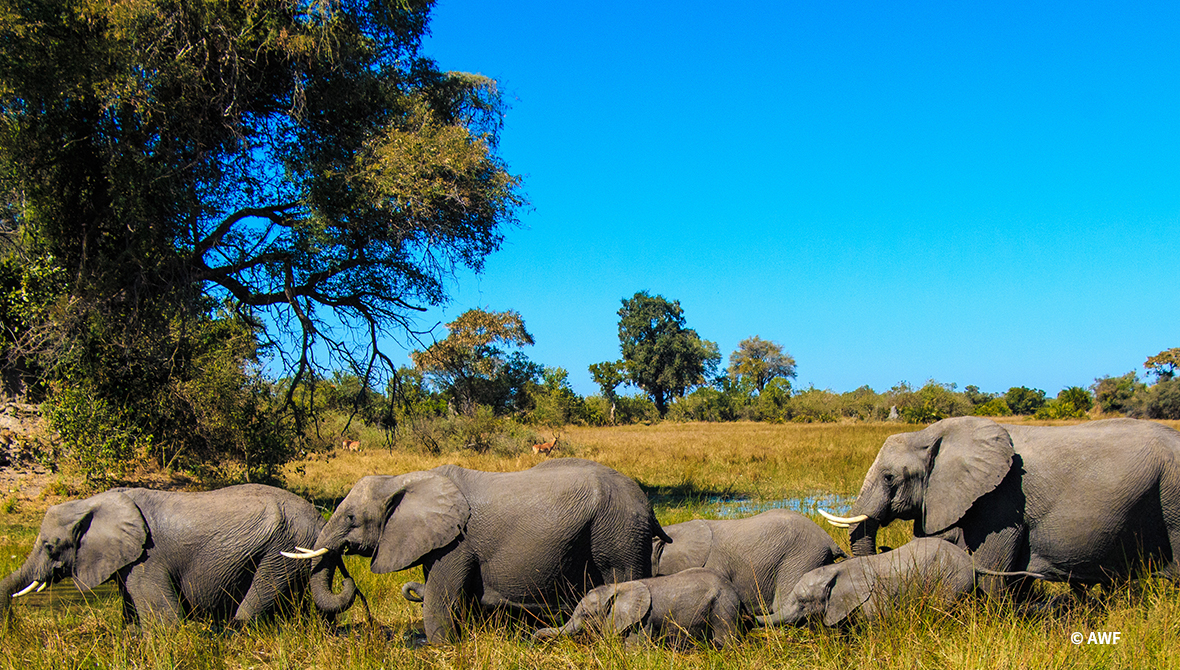AWF Celebrates World Wildlife Day

In the heart of the African savannah, amidst the breathtaking beauty of its landscapes and the rich diversity of its wildlife, lies a profound responsibility to protect and preserve. As we celebrate World Wildlife Day, we face a stern reminder of the importance of our conservation work on the continent.
Well, the good news is that in many places where we work in, things are looking up. From elephants to mountain gorillas, we're seeing positive trends in population numbers.
The recent report on the Status of the World’s Wildlife Migratory Species, however, shows a pressing need to address a critical issue that threatens the fabric of our planet's biodiversity: the decline of migratory species. Across continents and ecosystems, migratory species undertake awe-inspiring journeys, linking habitats and ecosystems in a delicate dance of life. However, rampant habitat loss, climate change, and human encroachment have pushed many of these species to the brink of extinction. Now, more than ever, it is imperative that we unite in our efforts to protect and conserve these iconic creatures before it is too late.
Africa’s natural wealth is unparalleled. We boast of the 2nd – largest tropical forest after the Amazon, a testament to the continent's ecological significance. The continent witnesses some of the last grand mammal migrations, with 14 of the 24 current historic large mammal migration species and subspecies calling Africa home, 9 of which exist within six specific landscapes.
Africa is home to over 1,100 mammal species, more than 60 carnivore species, a staggering 100,000 insect species comprise 15-20% of the world's insects, 3,000 freshwater fish species, and over 2,600 bird species reside within its vast landscapes. Yet, this immense biological wealth is not an assurance of permanence.
This year's theme, "Connecting People and Planet: Exploring Digital Innovation in Wildlife Conservation," couldn't be more fitting. It's a bold call to action, urging us all to bridge the gap between humans and nature by harnessing the power of digital innovation.
At the African Wildlife Foundation, we understand that conservation is a team effort. That's why we partner with wildlife authorities, local communities, and other stakeholders to develop comprehensive strategies that address the root causes of biodiversity loss. By taking an all-inclusive approach that integrates the needs of people and the planet, we can achieve lasting results that benefit both humans and wildlife alike.
By using tech to promote harmony between humans and wildlife, we're ensuring that both can thrive together. Whether it's creating wildlife corridors or restoring ecosystems, technology is our secret weapon in the fight to protect Africa's natural heritage. Based on our experience as pioneers of conservation on the continent, we have seen the results, and we can testify to its impact.
At AWF, we have been able to harness the power of technology to make conservation smarter and more effective. From satellite tracking to remote sensing, we're using cutting-edge tools to monitor wildlife, track poachers, and protect habitats. But it's not just about the fancy gadgets—it's about connecting people to wildlife meaningfully.
We are cognizant of the fact that central to any successful conservation strategy is the active involvement of local communities. Community conservation must be built on trust, equity, and mutual respect to succeed. It requires recognizing and respecting the rights of indigenous peoples and local communities over their traditional lands, involving them in decision-making processes, and ensuring their voices are heard and valued.
Moreover, community conservation must go beyond coexistence and create tangible benefits for local communities. This includes providing alternative livelihood opportunities, investing in education and healthcare, and supporting sustainable agriculture and eco-tourism initiatives. By aligning conservation objectives with the socio-economic needs of communities, we foster a sense of shared destiny and mutual benefit.
So, as we celebrate the strides we have made, let us remain steadfast to confront the challenges ahead; climate change, habitat loss, poaching, and human-wildlife conflict continue to threaten the survival of countless species. As we confront these pressing issues, let us also seize the opportunities of digital innovation and technological advancements. We can develop innovative solutions to protect wildlife and promote sustainable coexistence between humans and nature by harnessing the power of data analytics, remote sensing, and community engagement.
On this World Wildlife Day, let us carry forward the spirit of unity and collaboration that defines this global celebration. Let us translate our words into action, our intentions into impact. By reaffirming our commitment to building a better future for Africa and the world, it will be possible to envision a world where elephants roam freely across the savannahs, lions roar in the wilderness, and forests teem with life.
Together, let us work towards a future where our actions today ensure a thriving tomorrow for generations to come.